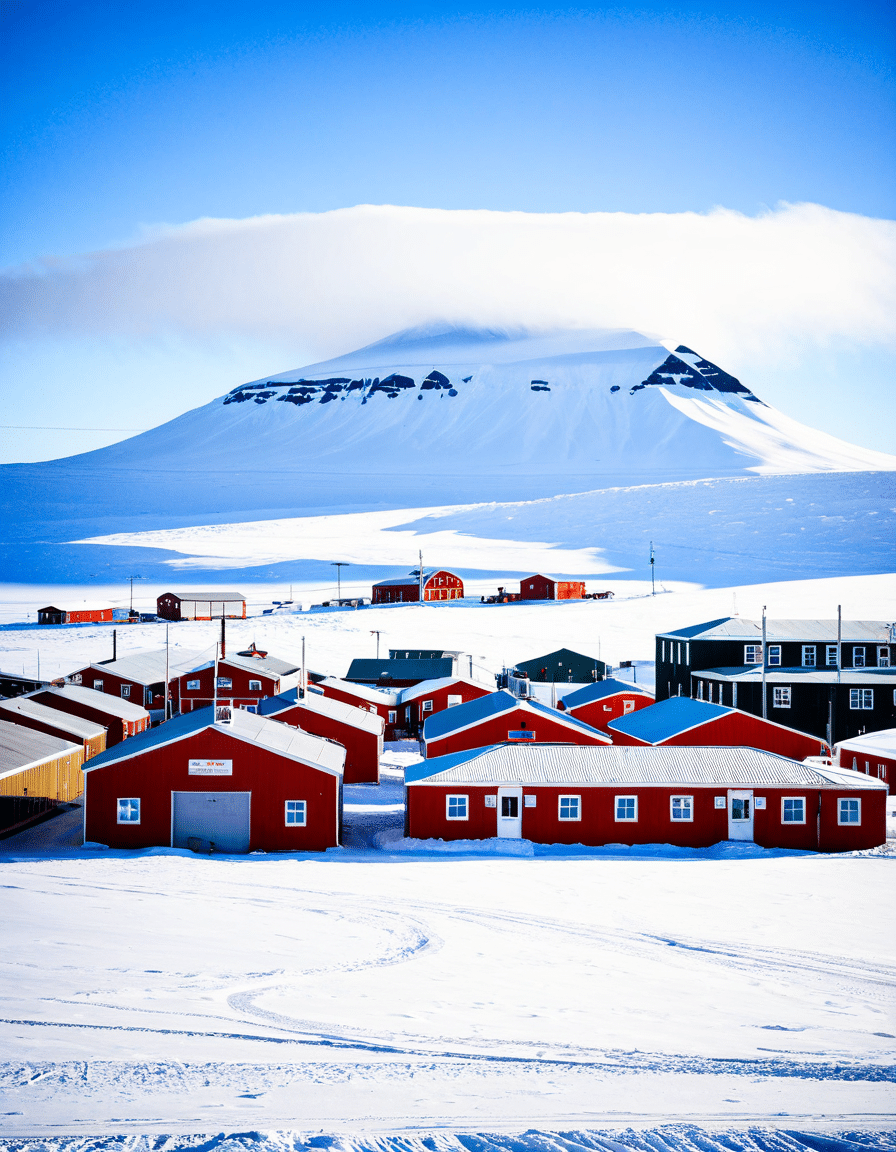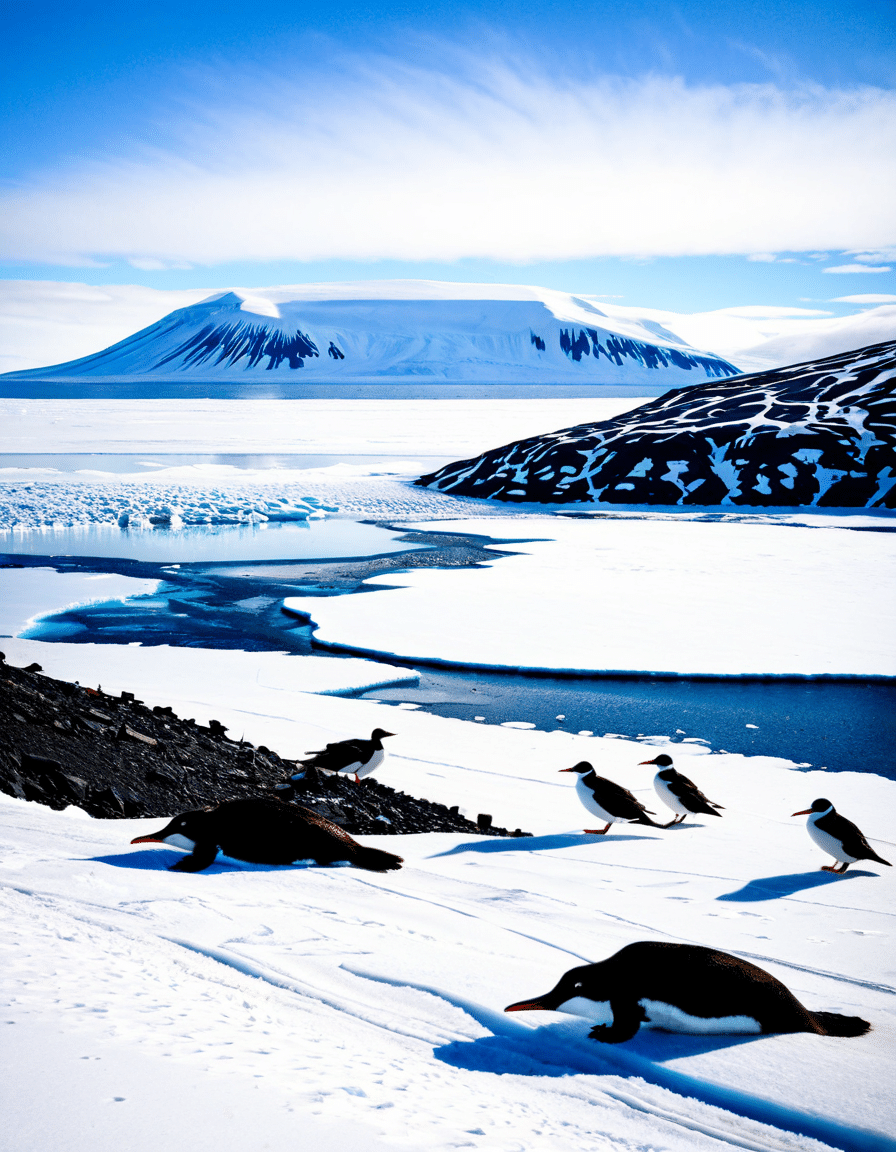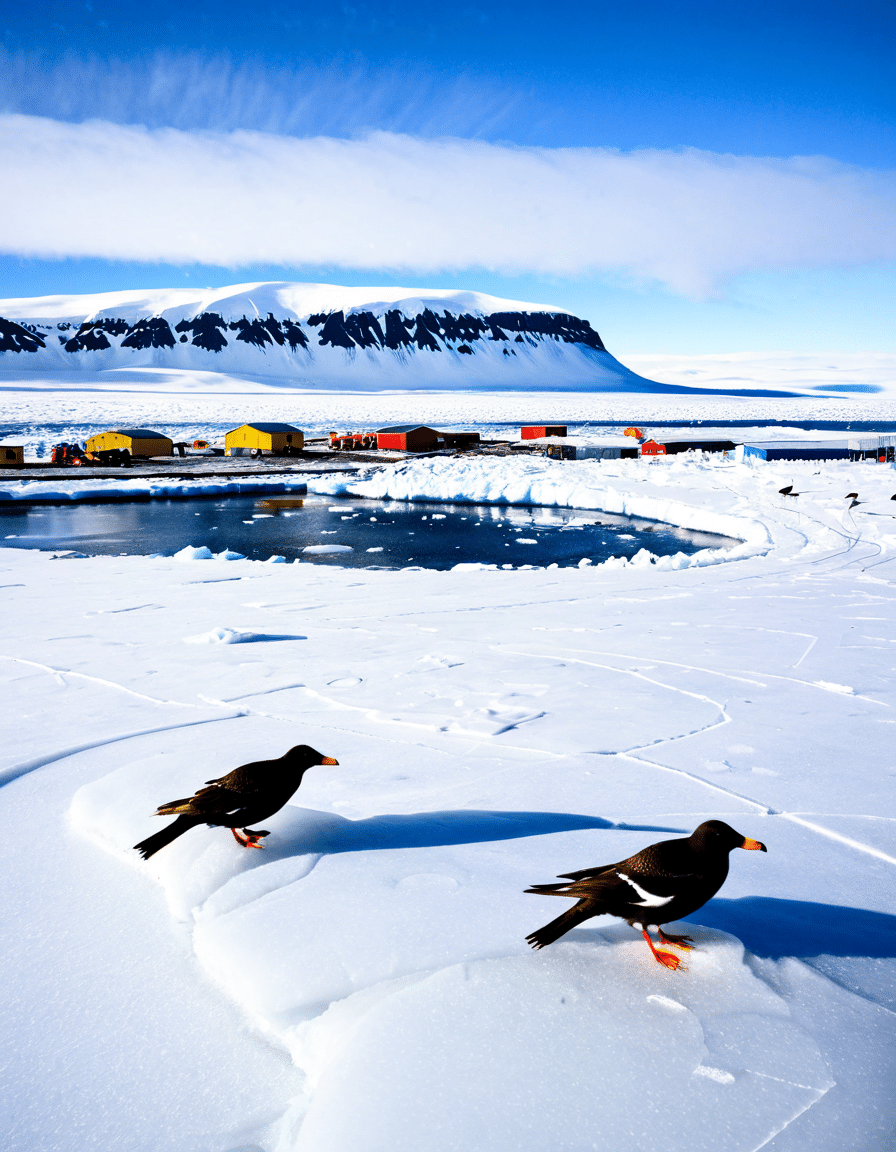Antarctica has long captivated scientists, and at the core of this icy expanse lies McMurdo Station. Managed by the United States Antarctic Program, this essential facility serves as a hub for groundbreaking research in climate science, marine biology, and atmospheric studies. Positioned on Ross Island, it stands as a beacon of inquiry, driving forward our understanding of the planet’s climate and environment. In this article, we will explore the multifaceted roles of McMurdo Station, highlighting its unique features, research contributions, and the international collaborations invigorating its mission.
The Top 7 Research Breakthroughs at McMurdo Station
1. Ice Core Drilling Projects
McMurdo Station has been pivotal in numerous ice core drilling efforts. Ice cores reveal vital data about historical climate patterns and contain information that stretches back hundreds of thousands of years. Researchers drill deep into the Antarctic ice, extracting cylinders that hold clues about our planet’s environmental history, shedding light on current climate challenges. This work aligns with initiatives at the University of Alaska’s ice core research lab, emphasizing the global importance of understanding climate change.
2. Astrobiology and NASA Collaborations
Recent collaborations at McMurdo Station have brought NASA into the fold to study extremophiles—organisms that thrive in extreme conditions. This research is crucial, not just for understanding life on Earth but for astrobiology, especially regarding potential extraterrestrial life. The partnership is illuminating; findings could inform missions aimed at Mars and other celestial bodies, making McMurdo a vital part of space exploration efforts.
3. Marine Biology and Ecosystem Studies
The Southern Ocean surrounding Antarctica is critical for global ocean health. McMurdo Station’s researchers study intricate relationships within marine ecosystems, including vital species like the Antarctic krill. These krill form the foundation of the food chain, serving as key nutrition for whales, seals, and seabirds. Findings at McMurdo feed into international conservation discussions, echoing similar marine research that informs policies worldwide.
4. Meteorology and Climate Change Research
McMurdo Station’s meteorological data significantly boosts our understanding of long-term climate patterns. The station meticulously records temperature and precipitation trends, enhancing predictive models. This data complements findings from Lackland Air Force Base’s meteorological team, reinforcing climate-related decisions with evidence-based insights that influence policies around the globe.
5. Glaciology Studies
Studying massive ice sheets like the West Antarctic Ice Sheet is essential for predicting sea-level rise. Scientific teams at McMurdo Station conduct ongoing research that supplies invaluable information for global climate models. This research mirrors work being done in sea-level management strategies in coastal areas, such as Miami, emphasizing that the implications of Antarctic research are indeed far-reaching.
6. Volcanology of Mount Erebus
Mount Erebus is one of the world’s most active volcanoes, and it’s right next door to McMurdo Station. Research here offers insights into volcanic activity and its effects on climate patterns. Critical findings from this site help scientists understand volcanic impacts on atmospheric conditions, facilitating collaboration with teams from other leading geographical research bodies.
7. Penguin Population Studies
One of the more delightful yet scientifically relevant projects at McMurdo Station involves monitoring Antarctic penguin populations. Researchers gather vital data to understand how warming oceans affect these iconic creatures. Studies akin to those conducted by the British Antarctic Survey help reveal insights that shape global wildlife conservation efforts, tying together ecology and climate science.

The Role of International Collaboration at McMurdo Station
McMurdo Station isn’t solely a U.S. operation; it’s a thriving center for international collaboration. Countries such as New Zealand, Italy, and Japan regularly collaborate on projects that span borders. Initiatives like Antarctica New Zealand’s biodiversity assessments not only share resources but also lead to co-authored publications that enhance scientific knowledge. This cooperative spirit strengthens global research, emphasizing the collective nature of understanding our changing environment.
Living and Working at McMurdo: The Human Element
The human experience at McMurdo Station adds another layer of significance to its scientific endeavors. Researchers and support staff face extreme conditions, from bitterly cold winters to dwindling supplies. During peak summer months, the station accommodates over 1,000 individuals, fostering a unique community built on shared experiences. Social events, science fairs, and even musical performances cultivate camaraderie and innovation, making us realize how essential this human connection is in surprise conditions.

Future Directions: McMurdo Station’s Role in Climate Solutions
Peering into the future, McMurdo Station is poised to remain at the forefront of tackling climate solutions. As the specter of climate change looms larger, its mission will integrate advanced technology in data collection and modeling. Collaborations with tech firms focused on climate innovation, like IBM, could lead to the development of AI-driven models applicable both in Antarctica and around the globe.
The legacy of McMurdo Station as a cornerstone of Antarctic research is set to expand. By bolstering its international collaborative efforts, the station is likely to pivot toward addressing imminent climate challenges, making it a point of light for scientific progress and critical in the quest for answers to Earth’s most pressing issues.
In a world where the stakes have never been higher, McMurdo Station stands as a symbol of hope, resilience, and relentless curiosity, paving the way for future generations to continue the essential work of understanding and preserving our planet.
Fun Trivia and Interesting Facts About McMurdo Station
The Vibrant Hub of Antarctic Research
Did you know that McMurdo Station is the largest research facility in Antarctica? Established back in 1955, it’s like a bustling town for scientists who pull off serious feats of discovery in extreme conditions. With a peak population pushing over 1,000, this station hosts a vibrant mix of people from various disciplines—geologists, biologists, and climate scientists all come together for collaborative projects. Speaking of collaborations, parallels can be drawn to how Wwe Monday Night Raw brings together top wrestling stars to put on a show; similar communal spirit exists here at McMurdo where challenges are tackled as a team!
A Staging Ground for Major Discoveries
McMurdo Station is not just a place for braving the cold; it’s a launchpad for significant research that impacts the wider global community. From studying ice core samples to analyze historical climate patterns to conducting experiments that could inform future clean energy solutions, it’s pivotal. And considering the global nature of politics today, knowledge gained here can even influence the dynamics, much like how Georgia’s electoral votes play a crucial role in shaping political landscapes. Each study at McMurdo contributes to a wider understanding of climate change and its effects, which is something we all should stay tuned into.
Interesting Tidbits
Here’s a fascinating fact: the average winter temperature at McMurdo hovers around -20°F (-29°C) and can drop even lower! You’d think such conditions would deter people, but scientists brave the cold, much like adventurers trekking through the Jordan Middle east, seeking to unravel deeper truths about our planet. When it’s time to take a break from the research grind, staff can enjoy some unique downtime activities—believe it or not, they even have their own mini-cinema! Imagine an eclectic range of films showing, possibly including something starring Robert Aramayo. Just think, in a place without much light in winter, catching a movie might be the perfect distraction!
So, whether you’re brainstorming ideas or contemplating How old Would Elvis be today, it’s safe to say that McMurdo Station is a fascinating blend of science, cooperation, and determination. The station serves as a real-world example of how humans come together under extraordinary conditions, setting the stage for discoveries that are vital to our understanding of climate and environmental change. Just as Real Madrid Champions league games draw fans from around the globe, McMurdo attracts some of the sharpest minds as they delve into the unknown!







